Being a first-time dog or puppy owner is such a special feeling, one that you will likely never forget. But whilst it’s exciting to welcome a four-legged friend into your life, the laundry list of training commands you want to accomplish can quickly become overwhelming.
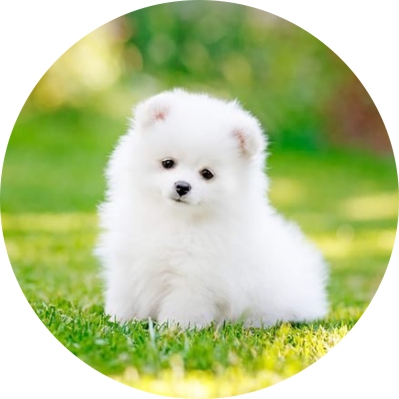 If this is you, you might be thinking - what commands should I teach my dog first? When should dog training begin? What should I start training my puppy to build the right foundations from day 1?
If this is you, you might be thinking - what commands should I teach my dog first? When should dog training begin? What should I start training my puppy to build the right foundations from day 1?
This article is here to guide you on your dog training first steps. Setting you up a simple training schedule to follow, even if it’s your first time training a puppy or new adoptee. So you can be sure you’re setting the foundations for an attentive, well-behaved dog.
But when should dog training begin? When should you start using these principles?
The answer is straight away. Whenever your dog or puppy is with you (and even when they are not) they are learning. And while you might not want to tackle any complicated techniques or ideas in those first few weeks, to allow them to settle in, you can start reinforcing behaviours that you like from the moment you meet your new furry pal.
Here are the 5 fundamental training principles I think form the building blocks of all training.
Being able to reliably get your dog’s attention is an incredibly useful tool, especially as you start to explore the world together. You may need it to cross a road safely, to redirect them away from distractions and to work on more complicated training concepts in the future.
To teach your dog or puppy to give you their attention, the easiest way to start is with ‘capturing’.
Simply sit near your pup, and wait for them to look at your eyes. If they do, either click and reward or use a marker word like ‘yes’ and reward. Once they are reliably offering this behaviour you could phase in a command word like ‘look at me’ or ‘here’. Repeat this a few times a day to start to build the command’s effectiveness with your dog.
If you find your dog or puppy tends to avoid eye contact, or isn’t offering the behaviour, try holding a treat or favourite toy up to your eyes instead.
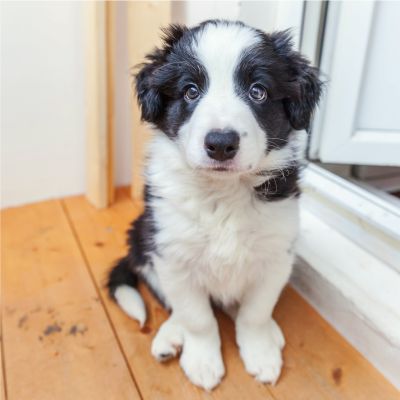 Sit is a wonderful tool. Not only is it a simple command to teach and an excellent confidence booster for you and your canine comrade, but it’s also a perfect command to redirect your dog from other unwanted behaviours.
Sit is a wonderful tool. Not only is it a simple command to teach and an excellent confidence booster for you and your canine comrade, but it’s also a perfect command to redirect your dog from other unwanted behaviours.
Your puppy is chewing something they shouldn’t? Sit! Your dog is jumping at the counter? Sit!
To teach a sit, you can either capture the behaviour naturally, as above, or you can use a ‘lure’.
To lure your dog into a sit, hold a treat or favourite toy in your hand just above their nose, rising upwards. This should naturally place them into a sit position - though it may take a little while for the concept to click, so be patient.
Recall is the holy grail of dog training - so start working on it as soon as you can. I’ve found the best way to build a fantastic recall is to start in small manageable steps and use the best currency you have (more about this below) - real meat, a super special toy or heaps of praise.
If you plan to use your dog's name, start by building an association that their name means ‘Hey you - I want to feed you an amazing treat!’.
So use the name - treat, name treat, name treat - until your dog hears their name and perks up excited.
Now start to add some distance, just a few steps away to start with, and have your dog or puppy move to you to get their treat. You can combine this with a marker word, like ‘Fido, come!’
Most dogs will pick this up quickly, and once you see them moving to you reliably, you can up the distance.
If your dog or puppy struggles with this concept, you can take a few steps back and place a treat on the ground, then once your dog has found it, walk away and place another. Your dog will then naturally start to come to you for treats, meaning you can then start to add your cue words this way.
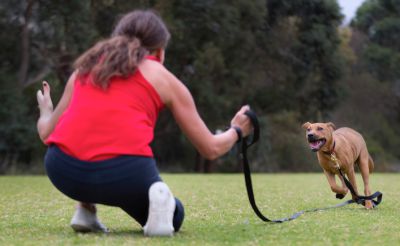 Recall is a long process, so don’t be tempted to rush it or become overconfident too quickly.
Recall is a long process, so don’t be tempted to rush it or become overconfident too quickly.
You’ll need to build up a solid foundation at home, outside, in new environments and with distractions to really proof it! Until then? Definitely invest in a long line to keep your dog or puppy safe, and to help practice long-distance recalls (without the possibility of being ignored!)
This is one of the most important skills to teach a dog, in my opinion! Often it’s not mentioned in a dog training for first time owners class or guide, but I can’t tell you just how useful it is.
A settle can be both captured and requested, so this concept is designed to be used both as a request when needed and as a way to generally build a calm, well-adjusted dog. This can be incredibly useful in public situations, when you need a dog out from under your feet to cook a meal, or if you have a high energy puppy that’s bouncing off the walls.
I like to start with capturing. I do this by watching my dog or puppy for a few days. Anytime they naturally settle, I will surprise them, calmly, with a treat placed in front of them (in a way so that they do not have to rise to eat it). They may then pop up and look to you for more, but keep about your business so they know this is not a training session - instead, it’s simply reinforcing a calm behaviour you like. If, however, your dog stays calm, and (crucially) isn’t thinking about food or you, then feel free to reinforce again. After a few days, you might start to notice your dog settling more naturally.
I will also teach a settle as a request, and do this by using a mat or towel (something your dog can lie on that you could take out with you in public situations). You can start by marking and rewarding when your dog places paws on the bed, and build this up to the point where you lure them into a down on the mat. If they jump off the mat simply wait them out, until they figure out that lying on the mat is where the treats happen!
Once they reliably offer this behaviour, use the cue word ‘settle’.
Your next step is to add duration, distractions and the real world to your settle. So at home, start asking for longer periods of settling before rewarding, while varying the time often so your dog doesn’t get frustrated. Then add in noises, movement (clapping, jogging, counting) to proof the settle, before trying a settle out at a cafe or park.
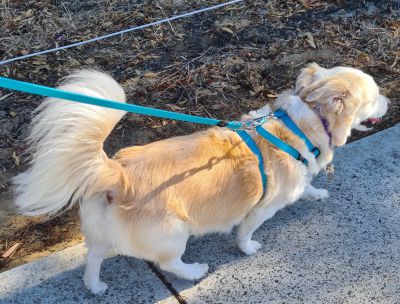 Ah the other holy grail of dog training, nice leash walking! As this is such an important concept, we have a full guide on How To Start Leash Training A Puppy, which is a useful step by step approach for any first-time owner of any untrained dog.
Ah the other holy grail of dog training, nice leash walking! As this is such an important concept, we have a full guide on How To Start Leash Training A Puppy, which is a useful step by step approach for any first-time owner of any untrained dog.
My biggest leash walking tip is to start with the right equipment. After years of trial and error, I’ve found the best harness designs that start you off on the right track. Ergonomically designed to aid your dog in making the right decisions while walking, whilst putting comfort and range of mobility first.
The first is the 4Pooch range - my very own design! I’ve spent years perfecting these walking accessories, based on my years of trialling harnesses of all kinds. I’ve finally managed to bring into being a harness that’s a comfortable, effective and amazing training aid!
The second harness that I think sets dogs up for a great start to their training is the 2 Hounds Range. Designed to prevent rubbing or chafing, while crafted to discourage pulling and make walking your dog an easy, more enjoyable experience for both of you.
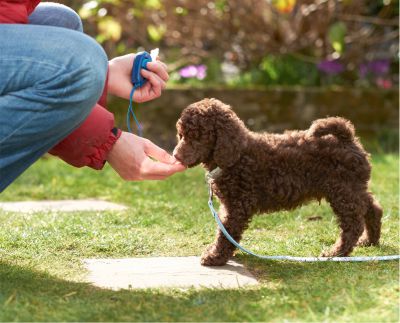 There you have it, a full guide on what to train first with your new dog or puppy. While this may seem like a lot to get a grip on, these foundational exercises will make the rest of your training a breeze!
There you have it, a full guide on what to train first with your new dog or puppy. While this may seem like a lot to get a grip on, these foundational exercises will make the rest of your training a breeze!
Write them down into steps or print this page out, and break them up into 3-4 small training sessions a day, and notice when your dog’s ability to perform reduces (that’s probably their training limit).
A few important things to remember during these sessions:
We hope this guide on how to train a dog for first time owners is useful. Do let us know how you get on in the comments below!